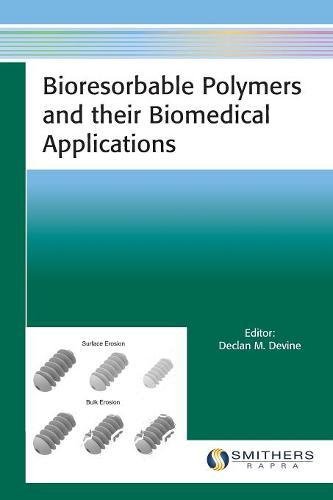

Most ebook files are in PDF format, so you can easily read them using various software such as Foxit Reader or directly on the Google Chrome browser.
Some ebook files are released by publishers in other formats such as .awz, .mobi, .epub, .fb2, etc. You may need to install specific software to read these formats on mobile/PC, such as Calibre.
Please read the tutorial at this link: https://ebookbell.com/faq
We offer FREE conversion to the popular formats you request; however, this may take some time. Therefore, right after payment, please email us, and we will try to provide the service as quickly as possible.
For some exceptional file formats or broken links (if any), please refrain from opening any disputes. Instead, email us first, and we will try to assist within a maximum of 6 hours.
EbookBell Team

0.0
0 reviewsBioresorbable or biodegradable polymers are commonly used in various biomedical applications. The application of bioresorbable polymers in the biomedical sector has been widely exploited by immobilising suturing thread with an analgesic or antibacterial drug, and the development of bioresorbable vascular scaffolds, wound-healing and intravenous drug-delivery devices. Furthermore, biodegradable polymers have been investigated as a replacement for metallic orthopaedic devices due to their precise control of material composition and microstructure. These polymers are eliminated from the body via dissolution, assimilation and excretion through metabolic pathways. The hydrolysing process breaks down the polymer into smaller units and its degradation products are excreted by means of the citric acid cycle or by direct renal excretion with no residual side effects.
Processing of bioresorbable implants can be achieved via conventional polymer processing methods such as extrusion, injection and compressing moulding, solvent spinning or casting. However, special consideration must be given when processing these materials because heat can cause a reduction in molecular weight due to the hydrolysing of bonds. In addition, overheating can depolymerise the polymer and, as a result, monomers can have a plasticising effect on the polymer. Recently, alternative approaches utilising rapid prototyping and micro-/nanofabrication processes have been employed.
The current work aims to address these issues and highlight recent advances in the biomedical field that have been enabled by the use of biodegradable polymers. This book is designed as a reference guide for academic researchers utilising biodegradable polymers in a range of areas from tissue engineering to controlled release of active pharmaceuticals, through to industry-based processors of biodegradable polymers.